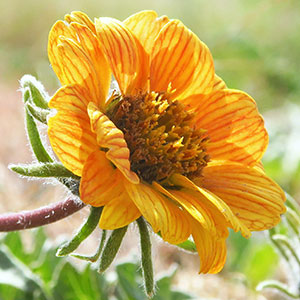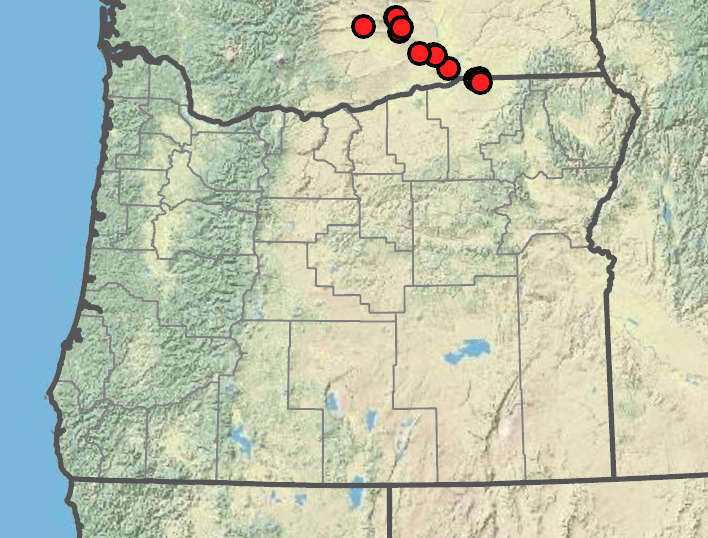Balsamorhiza rosea
rosy balsamroot
5–15 cm, villous-hirsute to villous below heads; from single taproot.
oblong-lanceolate, pinnately lobed from ¼ to ??? to midrib, occasionally some leaves undivided;
margins toothed to crenate with pointed teeth;
surfaces villous-hirsute; more densely so abaxially than adaxially;
basal leaves in 1–few rosettes;
blades 2.5–7 × 1.5–2.8 cm;
pinnae 6–12 mm wide;
petioles 1.5–4.5 cm;
cauline leaves in 1 opposite pair or 0;
blades 0.7–2 × 0.3–1 cm;
petioles 3–4 cm.
with 1 terminal head.
10–13 × 20–25 mm.
~13, yellow when young, turning from yellow to pink or red;
rays 10–15 × 7–8 mm.
~6 mm.
linear to linear-lanceolate, 12–15 × 1–2 cm, villous.
5–6 mm, strigillose.
11–13 mm.
=38.
Balsamorhiza rosea
Open, rocky areas. Flowering Apr–May. 300–400 m. Col. WA. Native.
Balsamorhiza rosea occurs almost entirely in Washington, with one known locality in Oregon.
Abigail (Abby) Moore



